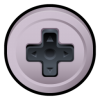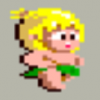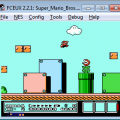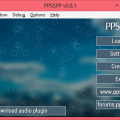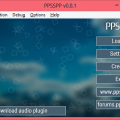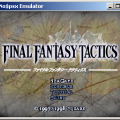-
Posts
163 -
Joined
-
Last visited
-
Days Won
1
sypherce last won the day on August 22 2013
sypherce had the most liked content!
About sypherce
- Birthday 05/28/1988
Contact Methods
-
AIM
sypherce
-
MSN
sypherce@gmail.com
-
Website URL
http://
-
ICQ
1
Profile Information
-
Gender
Male
-
Location
USA, Oregon
-
Interests
Snes, Nes, Ps1, DS, Programming, Sleep
sypherce's Achievements
-
Description: BizHawk is a A multi-system emulator written in C#. BizHawk provides nice features for casual gamers such as full screen, and joypad support in addition to full rerecording and debugging tools for all system cores. Supported Systems Nintendo Entertainment System / Famicom / Famicom Disk System (NES/FDS)Super Nintendo (SNES)GameboyGameboy ColorSuper GameboySega Master SystemSG-1000Game GearPC-Engine (TurboGrafx-16) / CD-ROMSuperGrafxAtari 2600ColecoVisionTI-83 CalculatorUnofficially Released Sega Genesis (Experimental)Gameboy Advance Change log:Rewrite of Cheats, Ram Watch and Ram searchadds support for float, and fixed point typesmore performance and less ram consumptionmulti-byte cheat supportmore features, and better design GBHawkImport fix from gambatte: lfsr reg init value -- https://github.com/sinamas/gambatte/commit/0d07cb7851505138d318a2f2da5d37af3b3a60f5 NESHawkAdd ability to set initial register states from moviesCurrently supported by mapper 228 (Action52)Support more FDS bios files SGBHawkNew memory domains TI83HawkAdded the ability to load programs into a TI-83 calculator. Also reworked the TI-83 link interface to more accurately represent hardware specs.Added support for TI83 group files MulticlientMovies -fix multitrack recordingN64 Virtual Pad - add reset and power buttonsrefactor to not repaint more than necessary (helps idling cpu power, and performance)fix turbo hotkey behavioradd a "Close and Clear SRAM" context menu option that is visible when the game has an existing sram filetighten up RomGame file loading and in particular for n64 to avoid some buffer copies and re-dearchiving operationsPath Config - fix folder browse behaviorDefault controls - XBox defaults - nintendo A = xbox B, and vice versaFix saveram to have the .SaveRAM extensionsolve an apparent threading datastructure conflict bug in input binding vs input poll thread, fixes non-working gamepads on some computersfix pthe --dump-close commandline option Hex Editorfix increment/decrement logic with frozen addresses.support increment/decrement on all highlighted addresses at oncesupport poking of multiple addresses LuaNew functionsmemory.readfloat(), mainmemory.readfloat()memory.writefloat(), mainmemory.writefloat()mainmemory.getname()client.opentracelogger()client.reboot_core() source: https://code.google.com/p/bizhawk/ download: BizHawk 1.5.2
-
Description: Dolphin is a Gamecube and Wii emulator. Most games run perfectly or with minor bugs. Games are playable at HD quality, with 1080p and more. This is a remarkable feature the actual Gamecube and Wii consoles are not capable of. As an open source project everyone can commit improvements. The code is hosted on code.google.com. Dolphin is actively developed and almost every day new features are added and bugs fixed as well. Dolphin is a multiplatform project and many operating systems are supported. Dolphin runs on Windows 7 (x86 and x64), Mac OSX andLinux. Change log: Fixed single core mode crashes in 64 bit Windows buildsFixed missing music in Super Monkey Ball 2Added missing DirectX runtime installer filesFixed some graphics issues for Metroid: Other M, Skies of Arcadia and Call of Duty: Black OpsFixed various other minor issues source: https://dolphin-emu.org/ download: Dolphin x32 4.0.1 download: Dolphin x64 4.0.1
-
Version 1.9
1,615 downloads
no$psx © Martin Korth nocash PSX emulator/debugger for windows The Program is intended to work out-of-the-box. There is no need for specific windows versions, special video drivers, obscure plug-ins, virtual CDROM drives, system BIOS, or tweaked per-game configurations. The Emulation should be complete with all hardware features fully implemented and working, though as by now it wasn't tested with too many games, so there may be still some problems with other games (bug reports are welcome). The BIOS is emulated via a BIOS-clone, which is free and faster than the original PSX-BIOS. There may be still some compatibilty issues (especially as most PSX games are applying patches to the original BIOS; the BIOS clone is reproducing known patches, but may fail on unknown ones). In case of problems, please use a copy of the original BIOS (with filename PSX-BIOS.ROM in no$psx folder), and please let me know if that is fixing problems with any games. CDROMs are supported via complete disk images (in .CCD+IMG, .CDI, .CUE+BIN, .MDS+MDF, or .NRG format), via single-track images (.ISO files), or as raw executables (.EXE files). Decompressing .ECM and .CDZ files is supported. Subchannel data (for libcrypt'ed games) can be read from .SBI, .M3S, .SUB, .MDF files. Reading from real CDROM drives is also supported, but does require wnaspi32.dll (which appears to be a problem on WinNT/Win2K and higher). Minimum Requirements are around 1-2 GHz on a Pentium 3, which is maybe fast or maybe not so fast (older PSX emulators are said to be working on 200MHz computers, on the other hand, I got told that no$psx is much faster than those old emulators... I've no clue how that is possible). Debugging/Development functions include disassembler, debugger, profiler, code breakpoints, memory breakpoints, assembler, I/O map viewer, VRAM viewer, polygon viewer, TTY debug console window, and complete PSX hardware specs. Pocketstation is emulated as part of no$gba v2.7 and up (the pocketstation is a PSX memory card with LCD screen; emulated in no$gba because GBA and pocketstation are both based on ARM processors). -
Description: Yanese is Yet Another NES Emulator Change log: VSync support: Games scroll is smoother and screen tearing went away. Anyway it's done syncing with DirectSound. It wasn't a easy task at least for me. So you may expect some sound glitches. I don't want to include any third party .DLL. Removed DirectDraw support:. Yanese now will use Direc3D 9 and can run in basic graphics cards. Removed Disassembler: I think i should make a more powerfull one. Anyway thanks to Blargg for the zip file. Save State Format Changed: Sorry the inconvenient, but it had to be that way. Fixed other bugs. source: http://yaneseland.com.ar/ download: Yanese x32 0.13 download: Yanese x64 0.13
-
Hey andreadipersio, glad to see some interest in the new build. If you need any help with your server I'd be happy to give any help I can.
-
Description: Yanese is Yet Another NES Emulator Change log: Version 0.11 Now you have the option to change between Direct3d 9 and DirectDrawStates Saved to disk. Yanese will create /savestates dir and save the states for each rom there. There are 4 slots.2 joypad support.Added File-> Rescan Rom path. You don't need to restart to fill the rom list.Rom UI removed .nes extension. Only the game name is shown now.When the emu has the focus it will prevent the Screen Saver and Monitor Power to get active.Fixed/Changed other bugs.source: http://yaneseland.com.ar/download: Yanese x32 0.11 download: Yanese x64 0.11
-
Introduction:For those of you who do not know DS2Key is an application for Nintendo DS that simulates a PC Keyboard/Gamepad. Status of the project:Recently I've converted the entire application from C to C++. Most of the code has been rewritten and hopefully has less, or no bugs, but we'll see. If anyone is interested bug reports are more than welcome, if you can think of any thing to implement I'm looking to finally polish this project and release a final version. Features:PPJoy supportTurbo ModeTouchpad mouse emulationLinux/Windows ConsoleWindows GUIMultiple Profiles Missing old Features:Guitar Hero Pad supportLinux mouse supportAutomatic server IP searchPPJoy is supported untested. It should work, configuring from the GUI is not supported at this time so You'll have to manually edit the ini files. Change log: r52Added Turbo ModeLots of syntax and code structure changes, expect more.Access point test code, nothing actively implemented though.Maybe other things, not sure.r51Finished converting the main and keypad windows to classes. Still need to clean up the namespacesr50Complete conversion to C++. Everything supported in previous versions, other than Guitar Hero Gamepad are supported. Project Page: https://code.google.com/p/ds2key/ Download: https://ds2key.googlecode.com/files/DS2Key%20r52.zip
-
Description: Yanese is Yet Another NES Emulator Change log: Version 0.10 Dirct3d 9 uses Texture Quads now, according to microsoft there is a performance degree when you "blit" to secondary buffer directly. Should run faster now.Sound and video sync. Games that uses special effects for tearing images look well.APU is working perfectly. Any bugs please tell me.Added MMC2 PunchOut!. The game is fully playable with no graphics distorsion nor glitches.Changed default palette to a NTSC compliant one.Now you can load .PAL filesNow top 8 scanline and bottom 8 scanlines are clipped to feel like a NTSC NES.Becouse scanlines are clipped i added 4X window, so 1920x1080 resolution can be used.Version 0.09 Fixed Save State issueAdded Mapper #58Fixed BxROM. Now a53games works fine. Thanks to tepples for telling me the bugRender Engine chnged a little.Window now isn't sizable since rendering now uses Point SamplingOptimized CPU coreVersion 0.08 Added 4 "Quick Save States", this means while you play, save states won't be saved to a file on disk.Mapper 226: "42 in 1" runs, "74 in 1" doesn't i dont know why, i have to check. Why? i had 42 in 1 in my pirate Famicom integrated in it.Mapper 187: Thunder Warrior and Master Fighter II support. Why? I had MF2 when i was a child.Changed "Pause" to spacebar.Optimizated cpu core a little.Windows XP,7,8 Look and Feel. Fixed other/minor bugs.source: http://yanese.co.nf/download: Yanese x32 0.10 download: Yanese x64 0.10
-
Description: Yanese is Yet Another NES Emulator Change log: Yanese now use Direct3d 9 instead of DirectDrawAddeded command line options (in response to tepples), just pass the path in the command line and Yanese will load the rom.Fixed APU bugs. Duty Cycle and Sweep Unit re-written. I think now it sounds well.Added Mute APU, this couse to mute all the sound.Added keyboard accelerators for common options.Fixed other/minor bugs. source: http://yanese.co.nf/ download: http://www.1emulation.com/forums/files/file/59-yanese/
-
Description: Wine (originally an acronym for "Wine Is Not an Emulator") is a compatibility layer capable of running Windows applications on several POSIX-compliant operating systems, such as Linux, Mac OSX, & BSD. Instead of simulating internal Windows logic like a virtual machine or emulator, Wine translates Windows API calls into POSIX calls on-the-fly, eliminating the performance and memory penalties of other methods and allowing you to cleanly integrate Windows applications into your desktop. Wine began in 1993 under the initial coordination of Bob Amstadt as a way to support running Windows 3.1 programs on Linux. Very early on, leadership over Wine's development passed to Alexandre Julliard, who has managed the project ever since. Over the years, as the Windows API and applications have evolved to take advantage of new hardware and software, Wine has adapted to support new features, all while being ported to other OSes, becoming more stable, and providing a better user-experience. An ambitious project by definition, work on Wine would steadily continue for 15 years before the program finally reached v1.0, the first stable release, in 2008. Several releases later, Wine is still under active development today, and although there is more work to be done, millions of people are estimated to use Wine to run their Windows software on the OS of their choice. Change log: New version of the Gecko engine based on Firefox 24.Preparation work for the Direct3D command stream.Window management fixes in the Mac driver.Support for IPHLPAPI functions on Android.Various bug fixes.source: http://www.winehq.org/
-
Description: FCEUX is a Nintendo Entertainment System (NES), Famicom, and Famicom Disk System (FDS) emulator. It supports both PAL (European) and NTSC (USA/JPN) modes. It supports both Windows and SDL versions for cross compatibility.The FCEUX concept is that of an "all in one" emulator that offers accurate emulation and the best options for both casual play and a variety of more advanced emulator functions. For pro users, FCEUX offers tools for debugging, rom-hacking, map making, Tool-assisted movies, and Lua scriptingFCEUX is an evolution of the original FCE Ultra emulator. Over time FCE Ultra had separated into many distinct branches.The concept behind FCEUX is to merge elements from FCEU Ultra, FCEU rerecording, FCEUXD, FCEUXDSP, FCEUXDSP CE, and FCEU-mm into a single branch of FCEU.As the X implies, it is an all-encompassing version of the FCEU emulator that provides the best of all worlds for the general player, the ROM-hacking community, and the Tool-Assisted Speedrun Community. Change log: The 2.2.2 release fixes a number of emulation bugs and adds many new features, most of which are related to debugging and reverse engineering. CommonProperly savestate NSF files"Auto-resume old play session" now also works with NSFs EmulationFixed mappers 178, 28, 53, 154, 43, 253, 19, 2Mapper 012 - added hardware dip for language selectUNIF PEC-586 - fixed render, added 512K cartridges suppportFixed UNIF 8157, UNIF T-262, UNIF DANCE2000Palette RAM reading fix for Old PPUBring some improvements to New PPU from BizHawk, fix vtoggle5/6 back to vtoggleFixed mmc5 savestates LuaFix wrong frequency calculation in sound.get() functionNew Lua functions:tobitstring()memory.readword()memory.readwordsigned()debugger.hitbreakpoint()debugger.getcyclescount()debugger.getinstructionscount()debugger.resetcyclescount()debugger.resetinstructionscount()New scripts:JumpingFCEUXWindow.lua Win32Added "Square pixels" option to Video Config"TV Aspect" ratio can be customized, by default it's 4:3Changed "Disable hardware acceleration" checkbox to a drop-down list with 3 optionsMovie recording: remember last Author name when creating a new movieMovie recording: added ability to record "Insert coin" command (for VS games)When no script is currently running, Shift+L loads the most recent Lua scriptDynamic link to lua51.dll instead of static linking, because some external libraries might crash without lua51.dllUpdated 7z.dll to v9.22A couple of fixes which deal with "multiple ROMs in a single archive" caseAuto-disable "Game Genie ROM" feature when no "gg.rom" file is foundFixed "Single Instance Mode" TAS EditorComply with Lua movie.rerecordcounting() settingFixed workflow with "Auto-adjust Input according to Lag" disabled DebuggerSmart scrolling up/down by whole instructions - ported from an obscure version of FCEUXD 1.1Scrolling maintains relative position of the ">" pointer inside the Disassembly windowHighlight PC pointer line when a breakpoint is hitdebuggerFontSize can be specified in fceux.cfgFixed storing and loading .deb files when working with archived ROMsFixed Cycles counter reset when loading an earlier savestateAdded Symbolic Debug naming by right-clicking any address or nameSymbolic names behave the same way as usual addressesNewly created Bookmarks inherit existing symbolic name by defaultAdded CDL data column to the left from Disassembly, to distinguish executed branches of code from not executedAdded 'T' condition for breakpoints (it checks the bank of the accessed data, see docs) Trace LoggerThe dialog window can be resizedDo not clear window log when stopping the loggingAdded "Log Cycles count" and "Log Instructions count" optionsAdded Symbolic Debug naming by right-clicking any address or nameClicking any address select the addressDouble-clicking any address brings Debugger at the addressAdded mouse wheel supportOnly output "from $XXXX" when the subroutine was called by JSR PPU ViewerAdded "Mask unused graphics" feature (needs Code/Data Logger running)Fixed window layout when using big fonts Hex EditorAdded "Highlighting" submenu and "Highlight Activity" featureAdded Symbolic Debug naming by right-clicking any addressSpecify Data bank condition when adding a Breakpoint by context menuFixed bugs when saving files while working with ROMs in archiveshexeditorFontSize can be specified in fceux.cfg RAM Search/RAM Watch Added "Hex Editor" button to RAM Search (right-clicking an address works as well)Fixed RAM Watch bug when contents of old .wch file were mixed with the newly saved dataSDL"--periodicsaves" command line option"--4buttonexit" command line option"--loadstate X" and "--savestate X" command line optionsAdded Unity desktop supportAdded otion to use system-provided LUA library instead of statically linked LUAFix issue where battery backup save was not being saved when using "Quit" hotkey Fixed bug where FCEUX would take exclusive grab of input in windowed mode when resuming from pause source: http://www.fceux.com/ download: http://www.1emulation.com/forums/files/file/18-fceux/
-
Description: Dolphin is a Gamecube and Wii emulator. Most games run perfectly or with minor bugs. Games are playable at HD quality, with 1080p and more. This is a remarkable feature the actual Gamecube and Wii consoles are not capable of. As an open source project everyone can commit improvements. The code is hosted on code.google.com. Dolphin is actively developed and almost every day new features are added and bugs fixed as well. Dolphin is a multiplatform project and many operating systems are supported. Dolphin runs on Windows 7 (x86 and x64), Mac OSX andLinux. Change log: Beta support for the Wii official online multiplayerThis is a feature that has been coming for a long time. More than two years ago, Matthew Parlane and Shawn Hoffman started working on emulating the Wii Wi-Fi networking API in order to run Wii online multiplayer games inside Dolphin. While it was not an easy change in itself, it also required a lot of modifications to core components of the emulator to be implemented properly (for example asynchronous IPC HLE) and a lot of debugging. It is now working well enough that we are releasing it to the public as a beta: don't expect everything to work, but popular games like Mario Kart Wii or Super Smash Bros Brawl can be played online right now. Alpha support for ARM/AndroidAbout two years ago, Ryan Houdek began the implementation of an ARM port of Dolphin, designed to run on powerful mobile phones and other ARM devices in the future. After a long time spent making Dolphin work well on both ARM and x86, Dolphin can now emulate GameCube and Wii games on recent Android phones. This support is still in early alpha stages: crashes happen, it's slow on Qualcomm hardware because of graphics drivers issues, and it is still missing a ton of features. Nowadays, Dolphin on Android is a two man project: Mathew Maidment is helping Ryan with the UI and making the Android version actually usable. Global User directory on WindowsThis is not exactly a major feature, but it is a big change in how Dolphin works on Windows, and requires user interaction to move from the old configuration system to the new one. Before 4.0, Dolphin configuration was stored next to Dolphin.exe, often causing issues when upgrading to a new version of Dolphin. New versions of Dolphin use a centralized location to store the configuration for all builds, usually My Documents\Dolphin Emulator. The documentation article linked above explains the details of this move, as well as what you need to do to migrate your old configuration to the new system (if you were using Dolphin before). New AX DSP HLE emulation codeDSP HLE is the main audio emulation technique used in Dolphin. Before 4.0, it was extremely inaccurate and full of bugs, mostly due to how it was implemented. Dolphin 4.0 introduces a full rewrite of the audio emulation used in 99% of games, fixing hundreds of audio related bugs in Dolphin. On the flip side, it is now required to run a game at full speed to get full speed audio out of it, which is a direct consequence of fixing these bugs. A lot of more minor changes were also integrated in that new Dolphin release: New lookA new look has been designed by MaJoR for Dolphin (new icon, new icon theme) and implemented on a new version of the Dolphin website by Pierre Bourdon. Wii Balance Board and GC Steering Wheel supportSupport for these two devices was added respectively by Matthew Parlane and skidau. The Wii Balance Board is not emulated and requires the real device to be used. Wii Remote support improvementsWii Remote background scanning was implemented to more closely match how a real Wii detects remotes, and support for -TR (Wii Motion Plus Inside) remotes was implemented for Mac OS X. A new documentation guide about Wii Remotes on Dolphin was also written by MaJoR to help Windows users with Wiimote issues. Fastmem support for Linux and OS XFastmem is an optimization for Dolphin's CPU emulation, which was previously only implemented on Windows. Adding Fastmem support on Linux and OS X boosted the performance by 15 to 20% on these platforms.New OpenAL audio backendThis audio backend, written by skidau, supports three important features that are not implemented in other backends yet: configurable audio latency, surround sound using the information contained in the Dolby Pro Logic II encoding used by most GameCube and Wii games, and support for sound stretching to make audio slow down when a game does not run at full speed. OpenGL video backend rewriteThe Dolphin OpenGL video backend was rewritten by Markus Wick in order to use newer features of OpenGL and be GLES3 compatible. As a result, the OpenGL backend is now the fastest Dolphin video backend on NVIDIA cards. NetPlay stability and usability improvementsBefore Dolphin 4.0, GameCube NetPlay was at best a curiosity. 4.0 added a lot of NetPlay related changes which makes it actually usable for most games, but sometimes with performance issues. Super Smash Bros Melee players are now using Dolphin for regular online NetPlay tournaments, and it just works. Read the official NetPlay guide for more information. Mac OS X support enhancementsThis release also adds a few small OS X improvements: the Dolphin DMG bundles are now signed by a valid developer ID and do not require you to disable Gatekeeper to be used. The emulator is also Retina Display aware and handles the logical scaling better on these screens. Icon themes supportIn addition to shipping with a new default icon theme, Dolphin now allows you to make your own themes and share them with other people. source: https://dolphin-emu.org/ download: Dolphin x32 4.0 download: Dolphin x64 4.0


